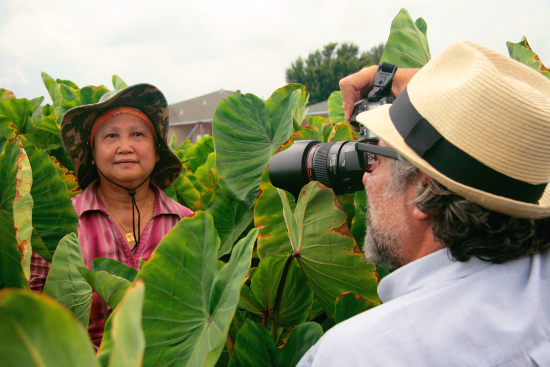You've had a long and varied artistic career thus far as a filmmaker, photographer, writer and producer. What was the initial inspiration for creating this new multimedia series, "The Lexicon of Sustainability"?
I spent nearly ten years living in Pistoia, a Tuscan town set between Lucca and Florence. When I arrived my Italian was poor and I didn’t know many people. Then a comedic sequence of events led to my working in the kitchen of a trendy hillside restaurant. I say “comedic” because I didn’t really cook before that experience, nor did I have much interest in food. What I learned there became my introduction to Slow Food, even if I didn’t know what the term meant. That accidental awakening started me on a journey to document the people of my town, how they lived, and the role food played as a fundamental part of their lives. My work began as a film, then a series of essays which culminated in the information artworks that eventually were published in a book called "SLOW: Life in a Tuscan Town."
As I traveled around the USA with "Slow," I was struck by how little the principles of the Slow Food movement, borne from over 2000 years of Italian cultural evolution, made sense in America. Our experience in this country, our historic relationship with food, and primarily the broken state of our food system require us to look at food in a much different way.
Since World War II, we have raced to centralize our food system, to consolidate manufacturing and eliminate local distribution hubs. We have become dependent on inefficient and inequitable farm subsidies and addicted to chemical solutions to maintain agricultural production at artificial levels, with no care for the environmental consequences. In doing so we have turned food into a commodity utterly stripped of its most precious cultural aspects.
The solution? We need a Marshall Plan to fix our food system, one that rebuilds the infrastructure necessary for healthy local food hubs in each community. We do this first by living more sustainably. Our project is an attempt to identify the most authentic voices in this movement and illuminate the terms and principles that define their innovative work.
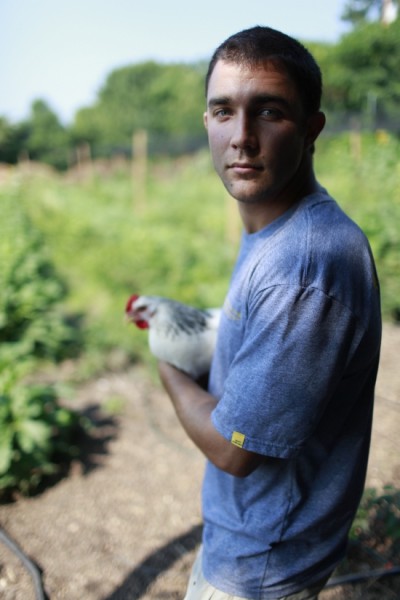
Image Credit: Douglas Gayeton / The Lexicon of Sustainability
"The Lexicon of Sustainability" is therefore based on a simple premise: people can’t be expected to live more sustainable lives if they don’t even know the most basic terms and principles that define sustainability. By illuminating the vocabulary of sustainable agriculture, and with it the conversation about America’s rapidly evolving food culture, the "Lexicon of Sustainability" can help people to pay closer attention to how they eat, what they buy, and where their responsibility begins for creating a healthier, safer food system in America.
The visuals for "Lexicon" are stunning, particularly the mosaic-like compositions that marry photographs, text, animation and video interview in a truly unique way. How did you develop this unique aesthetic?
The Italian images in my book “SLOW” began as a happy accident. I quickly learned that a single image was not enough. Not only were my images too small, but they also lacked the ability to convey the concept of “time,” of the beginning, middle and end of things. The idea of capturing hundreds of images, at times over long periods of time, then creating mosaics seemed like the only solution.
The decision to overlay these images with text came at about the same time. I wanted to convey what these people said to me as I worked. I wanted to share their insights, their observations. And I also wanted to solve another problem I had with photographs, namely that they often left so much unanswered. I wanted to provide as much information as possible within an image, to create what someone once called a “flat film,” a single image that actually uses time, that tells a story.
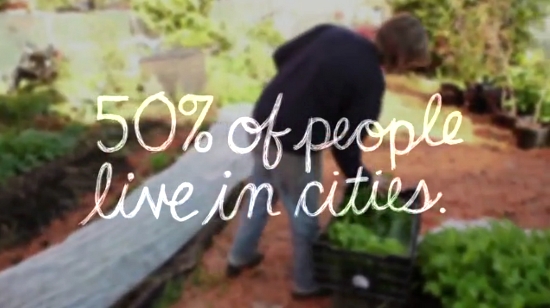
Image Credit: Douglas Gayeton / The Lexicon of Sustainability
Regarding my typographic process: after completing a photo collage, my staff assembles a list of every possible question a viewer might ask, ranging from “What’s that strange thing in the corner of the picture?” to “How does that machine work?” to “What is that person thinking?” After our subjects answer these questions their words are meticulously applied to the image. The process is lengthy. One image with noted farmer/photographer Michael Ableman -- from taking the initial photographs to building the photo collage with text -- took over a year to complete. The result is a handmade and hopefully authentic artifact that explains a fundamental principle of sustainability in highly personal terms.
How did you find the individuals to feature in "The Story of An Egg," and why were you drawn to them?
“Pasture Management” and “Pasture-Raised vs. Cage-Free” were among the first images I created for the project, so they will always be special, but also because the two individuals I profiled are such admiral folks. David Evans, featured in “Pasture Management,” is a renegade. He created Marin Sun Farms, which has pioneered a number of sustainable agricultural practices in the Bay Area.

David Evans, Marin Sun Farms. Image Credit: Douglas Gayeton / The Lexicon of Sustainability
The second image features Alexis Koefoed from Soul Food Farm. She has a deep knowledge base on the poultry industry and is extremely eloquent. A real deep thinker. Way back in 2008, she told me that the terms “cage-free” and “free-range” were meaningless and that we needed to focus on a poultry practice called “pasture-raised.” Her convictions let me to make a short film called “The Story of An Egg." I find it very rewarding that four years after that image was created, supermarkets have started to carry “pastured” eggs. Some farmers markets (the Ferry Building in San Francisco being a notable example) have even decreed that “pastured” eggs and poultry are the only type available for sale. This shows, I think, that language is important. Consumer can make informed decisions -- and vote with their wallets -- if they know what the terms which define sustainability mean.
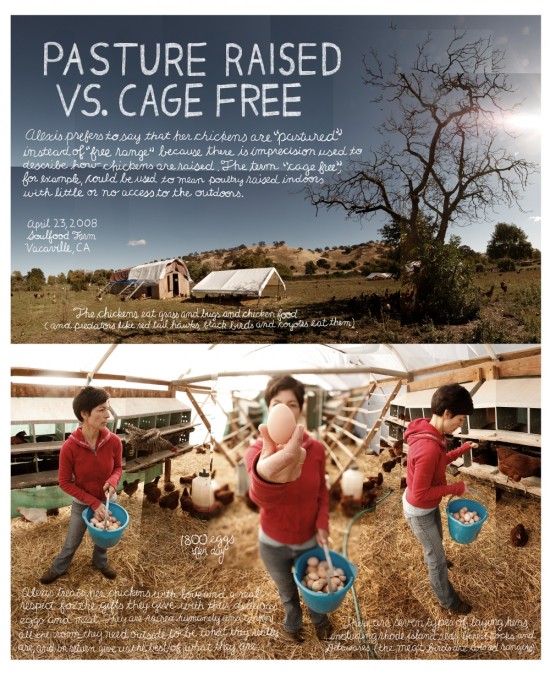
Alexis Koefoed, Soul Food Farm. Image Credit: Douglas Gayeton / The Lexicon of Sustainability
4) Can you give us an update on the current status of the project?
We have created almost 200 information artworks to explain how we can fix our food system. A selection of these are available as a "pop-up show." Anyone in the USA can apply to be a curator, unless they are actually curator. Farmers, students, teachers, librarians, activists and even government officials can go to our website to apply. They need to show how they will put on five shows in their community, involve their local food system, then serve as a “lending library” so that other schools and organization can use the show for their events. It’s a radical form of crowdsourcing, one taken from the web and applied to the real world. We anticipate over 500 shows in the USA in 2012.
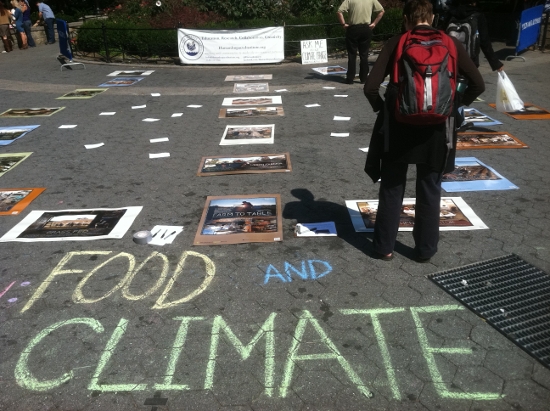
Image Credit: Douglas Gayeton / The Lexicon of Sustainability

Image Credit: Douglas Gayeton / The Lexicon of Sustainability
In addition to the pop-up shows, we are making short films with ITVS and PBS, as well as a social network of ideas which we hope to launch later this year. And a book that sums everything up will become available next spring, while we turn our team’s attention to the next tasks at hand, namely taking on sustainability in water, energy and climate change.
Watch "The Story of an EGG" from the "Lexicon of Sustainability" series.
Can learning the meaning of a single term actually help change the food system? David Evans and Alexis Koefoed think so. These poultry farmers explain the real story behind such terms as “cage-free, “free-range” and “pasture-raised” so that consumers can make informed decisions when they go to their local supermarket.
CREDITS
Produced by Laura Howard
Directed, Photographed and Written by Douglas Gayeton
Edited and Animated by Pier Giorgio Provenzano
Music by Rumplefarm and Kevin MacLeod (incompetech.com)
